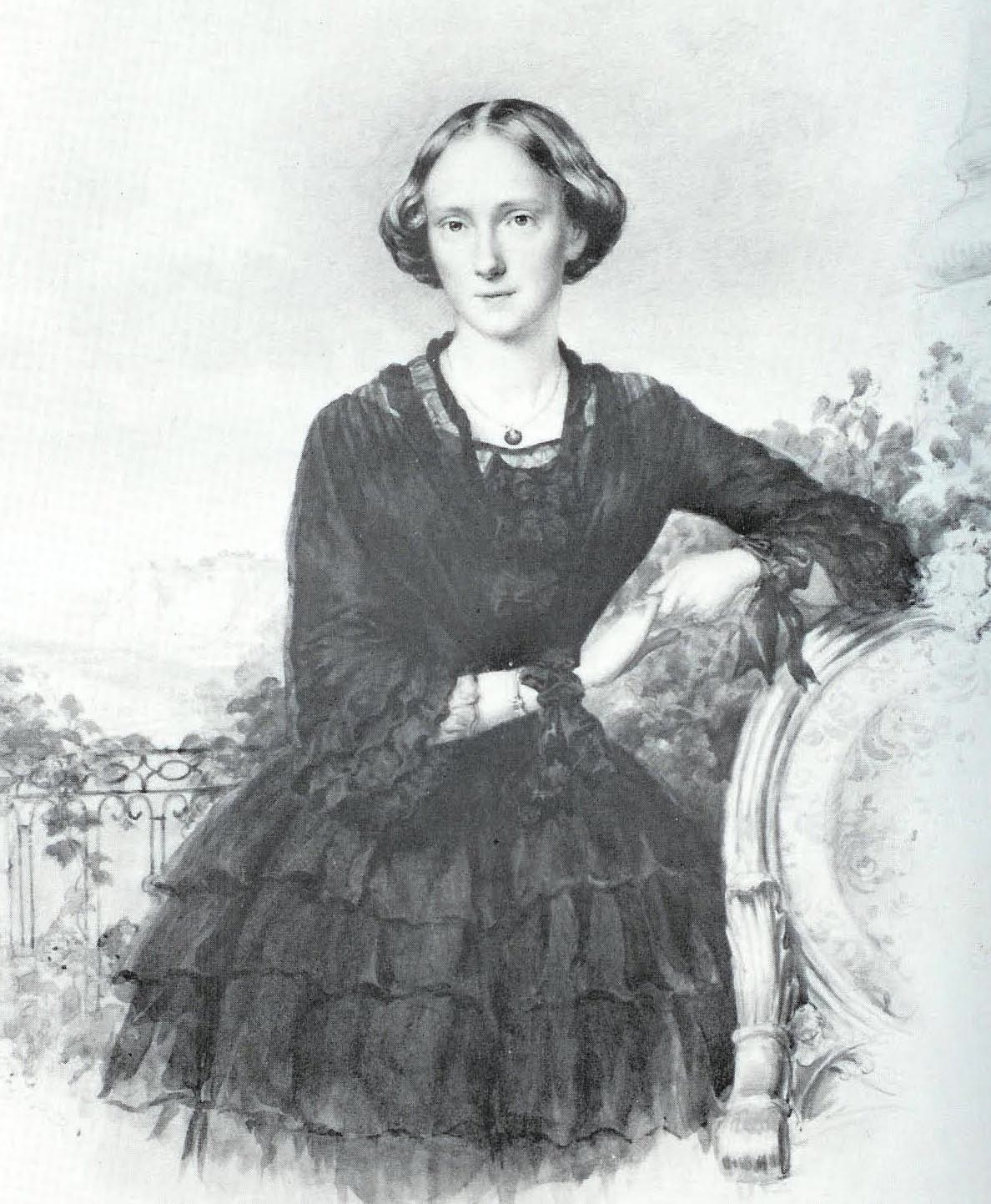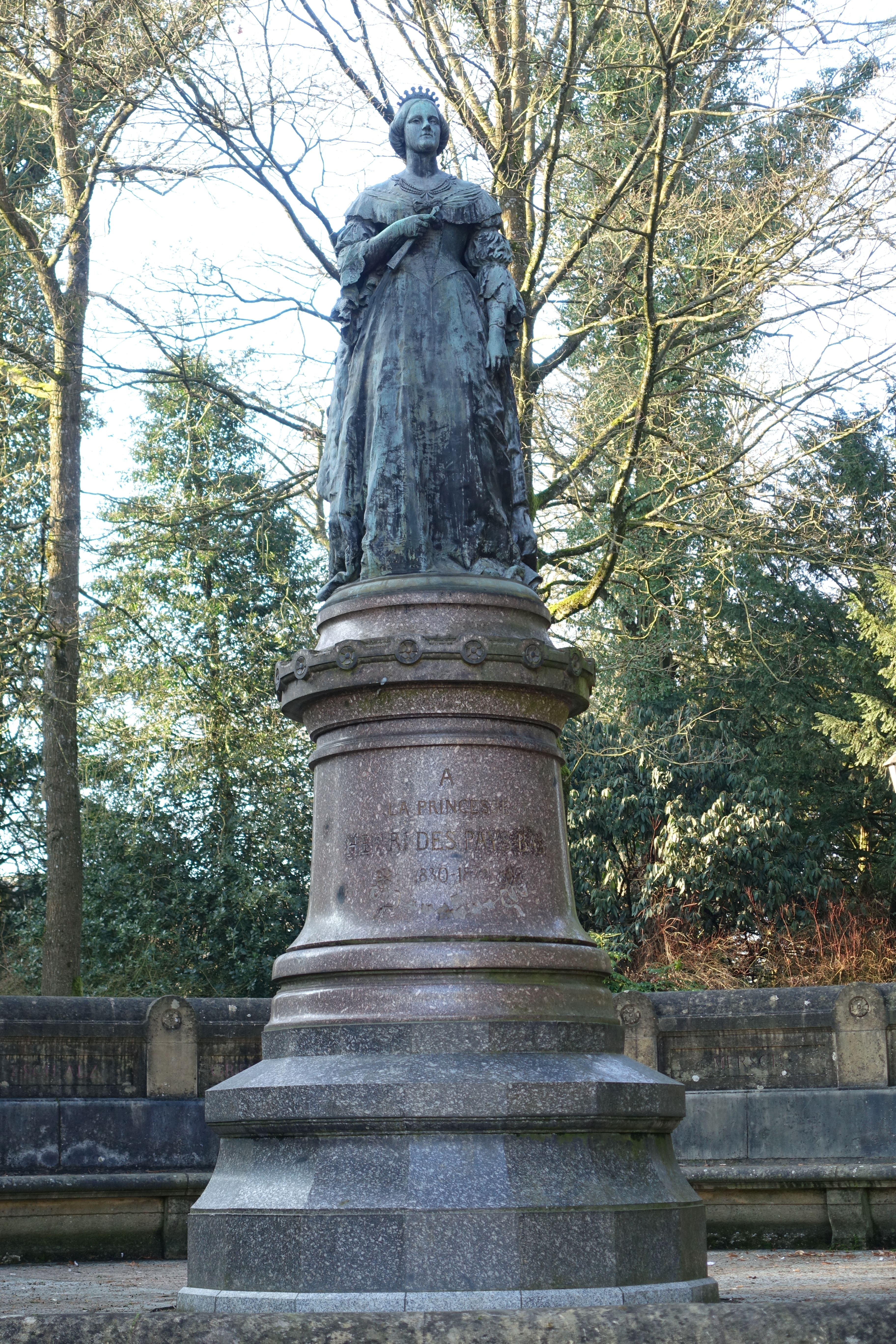 |
| Amalia as a young woman |
With Prince Félix's and Princess Claire's second little one due any day now, let's have a look at the woman many thought their first child was named for as little Amalia is not the first well-known Princess Amalia with ties to Luxembourg. There was also Amalia of Saxe-Weimar-Eisenach, the
wife of Prince Henri - or Hendrik - of the Netherlands. As governor and first lady of Luxembourg, Henry and Amalia were much
beloved for their charity and connection with the people. Let's learn a little more today about Amalia
and her impact on the Grand Duchy, shall we? We shall.
Amalia Maria da Gloria Augusta was born on March 20, 1830, in Ghent, then located in the Kingdom of the Netherlands. She was the youngest child of Prince Bernhard
of Saxe-Weimar-Eisenach and Princess Ida of Saxe-Meiningen. Through her father, Amalia was the
granddaughter of Karl August, Grand Duke of Saxe-Weimar-Eisenach. Her mother was the sister of Adelaide of
Saxe-Meiningen, the wife of King William IV of the United Kingdom. Amalia was named for an elder sister who died in infancy eight years before the younger Amalia's birth.
At the time of her birth, Amalia's father was a commander in the Dutch Army serving in the province of East Flanders. Amalia, her siblings, and their mother were forced to flee first to The Hague and then to Britain at the outbreak of the Belgian Revolution, which began just a few months after Amalia's birth; Prince Bernhard stayed behind in Brussels with his troops. The family were guests of King William and Queen Adelaide, whose coronation was held that same year.
Amalia spent several years with her family in Britain, where she was educated with her closest sister, Anna. Amalia eventually became fluent in three languages (German, French and English) and had a deep appreciation of both theater and music. Her mother Princess Ida, well-loved for her charitable work in both Belgium and Germany, influenced a similar sense of duty in her daughter.
 |
Henry and Amalia around the time of
their engagement |
Amalia and Henri first met in Madeira, a Portuguese island, in 1847, while vacationing there with Ida, Anna, and Queen Adelaide. Henri, the third son of King Willem II of the Netherlands, was staying there with his older brother Alexander, who was recovering from an illness. At that time the possibility of a marriage between the two was not discussed; Amalia was only seventeen at the time and more interested in her cousin, Georg of Saxe-Meiningen. But Henry remembered Amalia, and the friendly relationship between the two cousins became stronger in the following years.
In 1852, Prince Bernhard was finishing up a three-year military appointment in the Dutch East Indies. He was preparing to visit King Willem to report on his time there when Ida died suddenly of pneumonia. Bernhard brought his grief-stricken daughters Anna and Amalia along on his debriefing trip to the Netherlands in hopes of lifting their spirits.
However, Bernhard had also been approached by Willem on a possible engagement between Henri and Amalia. Their marriage would be part of a triple union between the Netherlands and Saxe-Weimar-Eisenach, as Henri’s sister Sophie married Karl Alexander of Saxe-Weimar-Eisenach, Amalia’s cousin. In addition, Amalia's uncle Karl Friedrich was married to Grand Duchess Maria Pavlovna of Russia, the sister of Dutch Queen Anna Pavlovna, both of them daughters of Tsar Paul I of Russia.
The engagement between Amalia and Henri became official on July 7, 1852, shortly before the former returned to Weimar. The couple strengthened their relationship by exchanging letters, and by visits to Weimar from Henri. Ten months after their engagement, Amalia and Henry married at the Stadtschloss in Weimar on May 19, 1853.
The couple maintained homes at Lange Voorhut Palace (purchased by Henri in the 1840s, now home to the M.C. Escher Museum) in The Hague, Soesdijk Palace near Baarn, and
Château de Walferdange in Luxembourg, where Henri had served as governor of the country since 1850. Following her mother's example in Weimar, Amalia devoted herself to charity work and improving the lives of the citizens in each of the communities where the couple lived, particularly children. Although the couple never had children of their own, Henri and Amalia were popular due to their interest in and generosity toward children.
Among Amalia's chief interests were expanding and improving education within Luxembourg, which had been neglected in previous years. She was an admirer of Friedrich Froebel, a German early childhood educator who developed and promoted the concept of kindergartens. Amalia had known Froebel since her teen years when he visited the court at Weimar. Amalia in turn helped encourage the use of kindergartens within Luxembourg.
 |
| Amalia in the 1860s |
Amalia was also interested in infrastructure within Luxembourg and the Netherlands. She was a supporter of the restoration of historical buildings within the Grand Duchy, as well as encouraging Henri's interest in expanding rail service within the country. The couple was also successful in bringing rail service to the village of Soestdijk (near Soestdijk Palace) in the Netherlands.
Amalia also traveled widely with her husband. The two traveled to Russia on a diplomatic visit,
spending time with his cousin, Tsar Alexander II in 1867. The couple made the trip to seek support
from Alexander during the Luxembourg Crisis, a question over the absorption of Luxembourg into either French or German hands that was threatening war between the latter two countries. Amalia and Henri did indeed receive Alexander's support, and he was allegedly swayed by Amalia's pleas. In the end, the Grand Duchy was not incorporated into either Germany or France and instead achieved independence.
In 1869, Henri and Amalia traveled to Egypt to represent the Netherlands at the opening of the Suez Canal. The two were the first royal representatives in a parade line through the Canal aboard the royal yacht. In commemoration of the event, Amalia also received a set of pearls from the Isma'il Pasha, Khedive of Egypt, the Turkish viceroy of then-provincial Egypt. The current whereabouts of these pearls are unknown.
 |
| Amalia's statue at Amalienpark |
Unfortunately, Amalia was to live only a short time after her travel to Egypt. She died on May 1, 1872, at her Luxembourg home of Château de Walferdange following a sudden illness.
She is buried in the Royal Crypt at Nieuwe Kerk in Delft, Netherlands. A medallion was issued to commemorate Amalia's funeral.
Several monuments of Amalia still exist in Luxembourg and the Netherlands, attesting to her popularity. Avenue Amalie in the city of Luxembourg and Amaliastraat in The Hague are two streets named in her honor. Also in Luxembourg City is a park bearing her name - Amalienpark, where a statue of the princess was erected in 1876. Henri attending the unveiling of the monument that year on October 31, along with his sister Sophie. This statue is the oldest public memorial in the city.
Six years after Amalia's death, Henri married Princess Marie of Prussia, a grandniece of German Emperor Wilhelm I. The marriage came about in hopes of Henri providing an heir to the Dutch throne; his older brother, Willem III, had two sons, but neither had children. Henri, however, died of the measles just five months after the marriage leaving Marie a childless widow. Willem's sons predeceased him, but a second marriage produced a daughter, Wilhelmina, who succeeded him in the Netherlands, while the Luxembourgish throne famously passed to another line of
the House of Nassau after his death.























